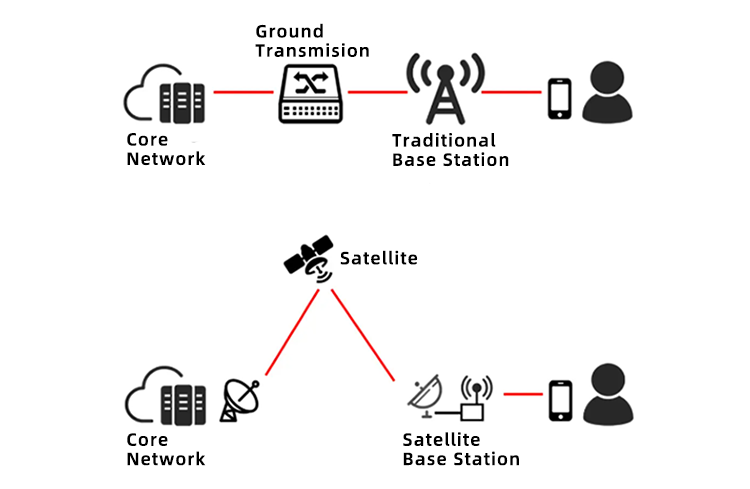Satellite communication has been a hot topic in the industry in recent years. When it comes to satellite communication, we cannot ignore the concept "satellite base stations". How does it differ from regular base stations? Allow me to provide a brief introduction.
A satellite base station is a device that communicates with satellites through satellite links, transmitting and receiving signals via satellite terminals. It establishes connections with satellite ground stations and connects to other communication networks through the ground core network. The main distinction between a satellite base station and a traditional base station lies in its backhaul method, which doesn't utilize conventional fiber-based backhaul, wireline connections, or microwaves. Instead, its backhaul relies on satellite-based transmission.
Unlike traditional base stations that primarily depend on ground transmission networks, satellite base stations integrate two communication systems.

Source: xzclass.com
· Global Coverage: Satellite base stations offer communication in remote areas and overcome geographical barriers, fill coverage gaps.
· Reliable Network Connectivity: They can ensure connectivity when terrestrial infrastructure is damaged in emergency situations or in natural disasters.
· High Flexibility: Satellite base stations can extend the reach of terrestrial networks, or create dedicated networks for specific applications.
Satellite base stations have a wide range of applications. In emergency situations such as geological disasters like floods, landslides, or mudslides, traditional base stations may be damaged. In such cases, satellite base stations play a complementary role. Rescue departments can utilize them for disaster response coordination and command, while people can use them to seek help or report their safety.
In addition to emergency communication, satellite base stations have also been used in scenarios such as deep-sea fishing, resource exploration, and outdoor operations.
However, the high latency in signal transmission may affect applications that require real-time responsiveness. Additionally, the construction and maintenance costs of satellite base stations are high, requiring significant financial investment and resources. And it has limited available bandwidth, which can lead to potential congestion and slower data transfer speeds, especially during peak usage periods.
Satellite base stations are an integral part of satellite communication and hold promising prospects for future development in the trend of space-air-ground integrated networks.

